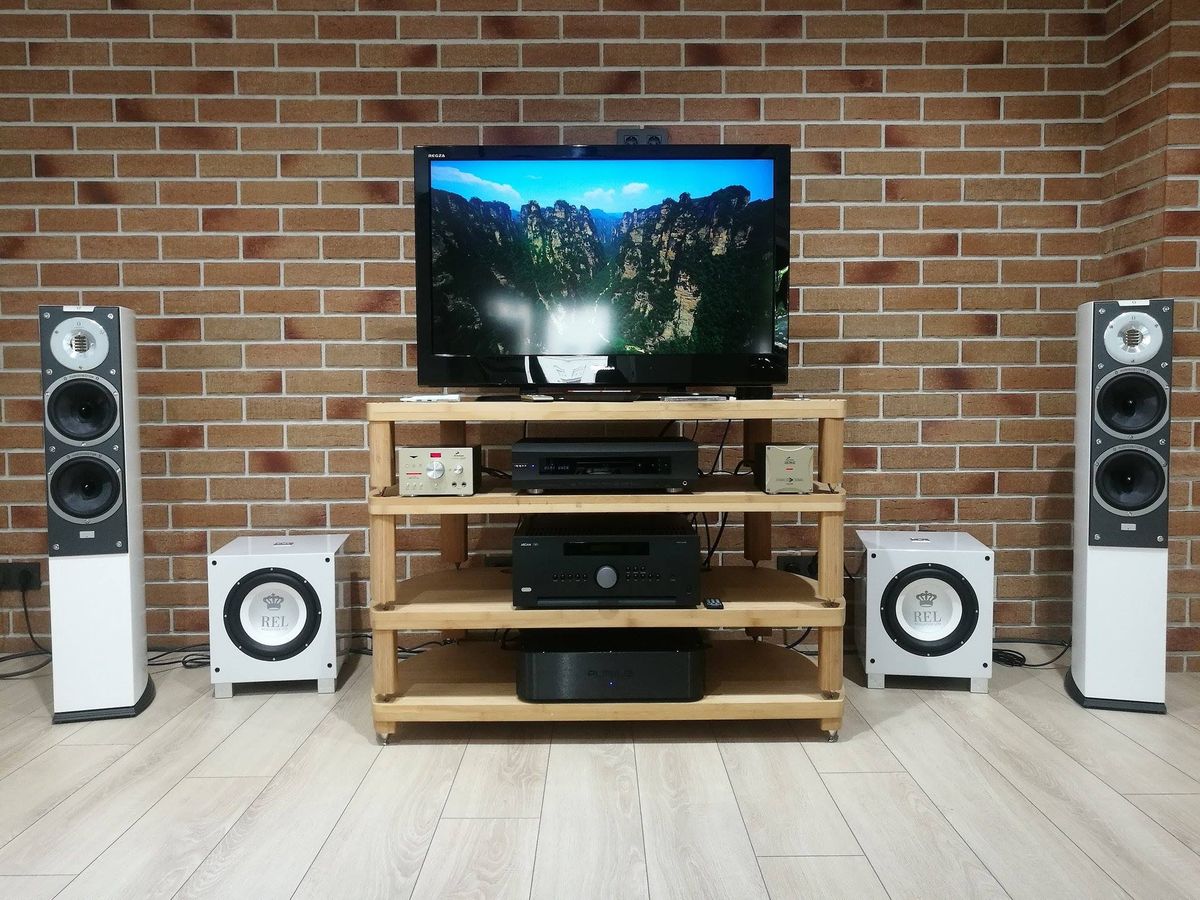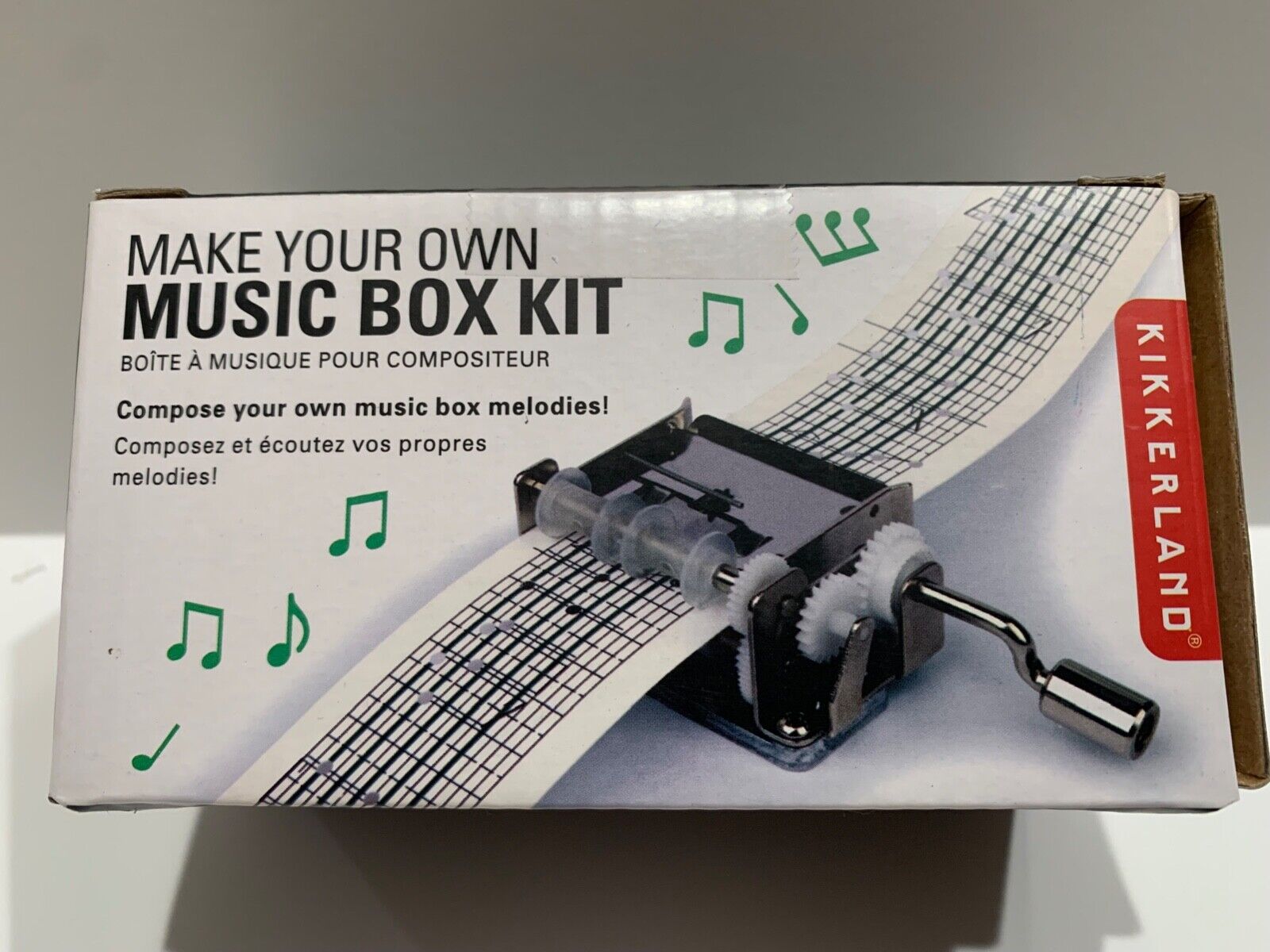Home>Production & Technology>Audiobook>How To Make Your Own Audiobook


Audiobook
How To Make Your Own Audiobook
Modified: February 17, 2024
Learn how to create your own audiobook and bring your favorite stories to life. With our step-by-step guide, you can become an audiobook producer in no time!
(Many of the links in this article redirect to a specific reviewed product. Your purchase of these products through affiliate links helps to generate commission for AudioLover.com, at no extra cost. Learn more)
Table of Contents
- Introduction
- Choosing the Right Book
- Preparing Your Recording Space
- Selecting the Right Equipment
- Setting Up and Testing Your Equipment
- Script Preparation and Recording Techniques
- Recording Your Audiobook
- Editing and Post-Production
- Finding the Right Voice Over Artist (optional)
- Creating Audiobook Cover Art
- Formatting and Uploading Your Audiobook
- Marketing and Promoting Your Audiobook
- Conclusion
Introduction
Are you a book lover with a passion for storytelling? Have you ever thought about turning your favorite book into an audiobook? With the rise in popularity of audiobooks, creating your own audio version of a book can be a rewarding and lucrative endeavor. Whether you’re an author looking to expand your reach or a book lover wanting to share your love for literature, making your own audiobook is an exciting project that allows you to connect with a whole new audience.
In this comprehensive guide, we will walk you through the step-by-step process of creating your own audiobook. From selecting the right book to marketing and promoting it, we will cover all the essential aspects of turning your literary masterpiece into an auditory experience. So, grab your headphones, find a cozy spot, and let’s dive into the fascinating world of audiobook production.
Before we proceed, it’s important to note that creating an audiobook requires dedication, time, and planning. It involves various stages, from recording and editing to formatting and marketing. However, with the right tools and knowledge, you can turn your passion for storytelling into a rewarding and enjoyable experience.
So, whether you’re an aspiring author or a book enthusiast, get ready to embark on a thrilling journey to create your very own audiobook. Let’s get started!
Choosing the Right Book
When it comes to creating your own audiobook, one of the most important decisions you’ll make is choosing the right book to bring to life. Here are a few key factors to consider when selecting a book for your audiobook project:
1. Select a book with a compelling story: Look for a book that has an engaging plot, well-developed characters, and a story that will captivate listeners. A book with twists and turns, suspense, or emotional depth can make for a memorable audiobook experience.
2. Consider the length: Take into account the length of the book and the time commitment it will require for recording and editing. Keep in mind that the longer the book, the more time and effort will be needed to produce the audiobook.
3. Choose a book with rich dialogue: Dialogue-heavy books with interesting and diverse characters can add an extra layer of depth and engagement to the audiobook. If the book has multiple characters or distinct accents, it can be an opportunity to showcase your voice acting skills or consider hiring a professional narrator.
4. Cater to your target audience: Consider the interests and preferences of your potential listeners. Are you targeting a specific genre, such as romance, mystery, or sci-fi? Choose a book that resonates with your target audience to maximize the chances of attracting listeners.
5. Obtain the necessary rights: Ensure that you have the proper rights and permissions to create an audiobook version of the book. If you’re an independent author, this step may be simpler. However, if you’re adapting a published book, you may need to get permission from the author or publisher.
6. Personal connection: It can be helpful to choose a book that you have a personal connection with or that aligns with your own interests and passions. Your enthusiasm for the book will shine through in your narration, making for a more engaging and authentic audiobook.
Ultimately, the most important factor in choosing the right book is selecting one that you are genuinely excited about. Your enthusiasm and passion for the story will resonate with listeners and make the audiobook creation process more enjoyable.
Preparing Your Recording Space
Creating a high-quality audiobook requires a well-prepared recording space. This section will guide you through the steps to set up your recording area for optimal sound quality and minimize background noise. Here are some key tips to consider:
1. Find a quiet location: Choose a room or area where external noise is minimal. Ideally, select a room with thick walls and minimal traffic noise. If you don’t have a separate room, consider using a walk-in closet or a space that can be soundproofed with blankets or acoustic panels.
2. Clear the room of clutter: Remove any objects or furniture that may cause unwanted noise or echoes during the recording. A clutter-free space will help improve the audio quality and prevent distractions while narrating.
3. Consider acoustic treatment: If possible, invest in some basic acoustic treatment to minimize echo and reverberation in your recording space. Acoustic foam panels or soundproof curtains can help absorb unwanted sound reflections and improve the overall clarity of the recording.
4. Control ambient noise: Take steps to minimize or eliminate ambient noise sources, such as HVAC systems, fans, or appliances. Close windows, turn off noisy electronics, and consider using noise-cancelling headphones or a noise gate during the recording process.
5. Use a pop filter: A pop filter is a screen placed in front of the microphone to reduce plosive sounds like “p” and “b” that can cause distortion in the recording. It helps ensure a clear and crisp sound quality while speaking into the microphone.
6. Test for room resonance: Clap your hands or make a loud noise in the recording space and listen for any strange echoes or resonances. If needed, you can add additional sound-absorbing materials, like carpets or foam panels, to minimize acoustic issues.
7. Check for electrical interference: Make sure that your recording space is free from electrical interference. Keep recording equipment away from electrical devices, transformers, or other sources that may cause buzzing or humming noises in the recording.
Remember, the goal of preparing your recording space is to create a clean and controlled environment where the focus is on your voice and the storytelling. By putting in the effort to set up your space correctly, you’ll enhance the audio quality and provide a professional listening experience for your audience.
Selecting the Right Equipment
To create a high-quality audiobook, it is essential to have the right recording equipment. While there are various options available, here are the key elements you should consider:
1. Microphone: Invest in a good-quality microphone that captures your voice accurately and with clarity. Look for a microphone that is specifically designed for voice recording, such as a condenser microphone. USB microphones are a popular choice for beginners due to their easy setup and affordability.
2. Headphones: A pair of closed-back headphones is crucial for monitoring your audio while recording and editing. They help you detect any background noise or issues in real-time, ensuring a clean and professional audio recording.
3. Audio interface (optional): While USB microphones can be directly plugged into your computer, using an audio interface can provide better sound quality and more control over the recording process. An audio interface acts as a bridge between your microphone and computer, converting analog audio signals into digital ones.
4. Microphone stand or boom arm: To minimize handling noise and maintain consistent microphone positioning, it is recommended to use a microphone stand or boom arm. This will keep the microphone stable while you are narrating, ensuring a consistent audio quality throughout the recording.
5. Pop filter: A pop filter is a screen placed in front of the microphone to reduce plosive sounds like “p” and “b” that can cause distortion in the recording. It helps ensure a clear and crisp sound quality while speaking into the microphone.
6. Acoustic treatment: While not technically equipment, investing in some basic acoustic treatment can greatly improve the sound quality of your recordings. Acoustic foam panels or soundproofing materials can help minimize echoes and reverberations, resulting in a more professional and polished audio recording.
7. Recording software: Choose a reliable recording software that suits your needs and budget. There are many options available, ranging from free to premium software. Audacity and Adobe Audition are popular choices and provide a wide range of editing and post-processing capabilities.
When selecting equipment, consider your budget and the specific requirements of your recording space. It is important to strike a balance between functionality, quality, and affordability. Remember, the goal is to capture clear and professional-sounding audio that will engage and captivate your audience.
Setting Up and Testing Your Equipment
Once you have selected the right recording equipment, it’s time to set it up and ensure everything is working properly. Proper setup and testing are crucial to ensure the best audio quality for your audiobook. Here are the essential steps to set up and test your equipment:
1. Microphone placement: Position the microphone at a comfortable height and distance from your mouth. Generally, placing the microphone about 6-12 inches away from your mouth will yield good results. Experiment with different angles and distances to find the optimal position that captures your voice clearly without distortion or background noise.
2. Connect your equipment: Connect your microphone to your computer or audio interface using the appropriate cables. If you’re using an audio interface, make sure it’s connected to your computer and recognized by your recording software.
3. Adjust microphone settings: Open your recording software and check the microphone settings. Ensure that your microphone is selected as the input device and adjust the input level to a suitable volume. Start with a lower input level and gradually increase it while monitoring your voice to avoid distortion or clipping.
4. Check headphone audio: Put on your headphones and listen for any distortions, hums, or unusual noises. Adjust the headphone volume to a comfortable level and make sure you’re getting clear audio playback from your recording software.
5. Test for background noise: Take a moment of silence and listen for any background noise, such as fans, air conditioning, or outside disturbances. Minimize or eliminate any sources of noise that could affect the quality of your recording. You can use noise reduction techniques or a noise gate during the editing process to further reduce background noise if necessary.
6. Perform a test recording: Record a short sample using your chosen recording software and listen back to it. Pay attention to the overall sound quality, clarity of your voice, and any potential issues like plosive sounds or high-pitched noises. Make adjustments to the microphone placement or settings as needed.
7. Monitor audio levels: During the test recording, monitor the audio levels on your recording software to ensure they are within the optimal range. Avoid peaks or levels that are too low, as this can affect the quality of your audio. Aim for a balanced and consistent recording level throughout your audiobook.
By taking the time to set up and test your equipment properly, you can avoid technical issues and ensure a smooth recording experience. Regularly check your equipment before each recording session to make sure everything is functioning correctly, and perform quick sound checks to maintain the quality of your audiobook.
Script Preparation and Recording Techniques
Before diving into recording your audiobook, proper script preparation and adopting effective recording techniques are essential. Here’s what you need to know:
1. Script preparation: Familiarize yourself with the book by reading it beforehand. Take note of any challenging pronunciations, character voices, or special instructions. If you’re the author, ensure that the text is finalized and edited before recording. Consider making annotations or highlighting important sections to guide your narration.
2. Practice and warm-up: Before starting, warm up your voice with vocal exercises or simple reading exercises. Practice speaking clearly and at a comfortable pace. Warm-ups improve vocal tone, range, and diction, reducing the chances of vocal fatigue during long recording sessions.
3. Utilize vocal expressions: Bring the text to life by using vocal expressions and variations in tone, pace, and volume. Pay attention to the emotions conveyed in the book and try to match them with your voice. Engage in the storytelling process and create a captivating experience for your listeners through your voice acting skills.
4. Maintain a consistent pace: Consistency in pacing is crucial for a smooth and enjoyable listening experience. Aim for a steady rhythm, allowing the story to flow naturally. Avoid rushing through paragraphs or speaking too slowly, trying to strike a balance that keeps the listeners engaged without overwhelming them.
5. Take breaks when needed: Audiobook recording can be a lengthy process, and it’s important to avoid vocal strain. Take regular breaks to rest your voice and stay hydrated. Don’t push yourself too hard, as vocal fatigue can negatively impact the quality of your narration.
6. Handle mistakes efficiently: Mistakes happen, but it’s important to handle them efficiently during the recording. Instead of starting from the beginning, pause, take a deep breath, and repeat the sentence or section with the correct pronunciation or emphasis. Editing software can later trim out the mistakes and ensure a seamless final product.
7. Maintain consistency: Try to maintain consistent audio quality throughout your recording sessions. Ensure that the microphone position, volume settings, and room atmosphere remain consistent for a uniform listening experience.
8. Stay focused and engaged: Maintain your concentration while narrating to deliver a compelling performance. Stay immersed in the story, connecting with the characters and emotions. This will result in a more enjoyable listening experience for your audience.
Remember, practice makes perfect. The more you record and refine your techniques, the more confident and polished your audiobook will become. Enjoy the process and let your passion for storytelling shine through your narration!
Recording Your Audiobook
Now that you have prepared your script and mastered the recording techniques, it’s time to dive into recording your audiobook. Follow these steps to ensure a smooth and successful recording process:
1. Find your rhythm: Before you begin recording, find a comfortable pace and rhythm for your narration. Take a few deep breaths to relax and set a steady pace that allows you to maintain consistency throughout the entire audiobook.
2. Use proper microphone technique: Maintain an appropriate distance from the microphone to avoid distortion and unwanted noises. Position the microphone slightly off-center to reduce plosive sounds and maintain a consistent tone. Experiment with different microphone positions and angles to find the sweet spot that captures your voice clearly.
3. Take breaks when needed: Recording an entire audiobook can be a lengthy process, so it’s important to take breaks when needed. Pausing and resting your voice will help you maintain vocal clarity and prevent fatigue. Use these breaks to rest, hydrate, and recharge before continuing with the recording.
4. Monitor your audio levels: Keep an eye on your audio levels throughout the recording. Aim for a consistent volume without any clipping or distortion. Adjust the microphone gain or your vocal projection to achieve a balanced and professional sound.
5. Minimize background noise: Take measures to minimize any background noise during the recording process. Ensure that your recording space is quiet and free from distractions. Close windows, turn off fans or air conditioning, and inform others around you to keep noise to a minimum during your recording sessions.
6. Maintain vocal consistency: Try to maintain a consistent tone and vocal quality throughout the entire audiobook. Pay attention to character voices, accents, and emotions, ensuring that they remain consistent throughout the narration. This will help create a more immersive and engaging listening experience for your audience.
7. Stay hydrated: Drink plenty of water before and during your recording sessions to keep your vocal cords hydrated. Hydration is key to maintaining vocal clarity and preventing vocal fatigue or strain. Avoid consuming dairy or caffeinated beverages, as they can contribute to vocal dryness.
8. Keep a recording log: Maintain a log or document where you can note any mistakes, retakes, or specific instructions for the editing process. This will help you stay organized and make editing more efficient when it comes to post-production.
9. Listen to playback and make adjustments: After completing a chapter or section, listen back to the playback. Take note of any areas that may require re-recording or adjustments. Pay attention to pacing, clarity, and overall sound quality. Make necessary corrections before moving on to the next section.
Remember that recording an audiobook requires patience and focus. Take the time to deliver your best performance, and don’t be afraid to redo sections if you’re not satisfied. With each recording session, you’ll improve your skills and create a captivating audiobook that will delight your listeners.
Editing and Post-Production
Once you’ve completed the recording phase of your audiobook, it’s time to move on to the editing and post-production stage. This process is crucial for refining the audio, removing any errors or noise, and creating a polished final product. Follow these steps to ensure your audiobook sounds professional and engaging:
1. Review your recordings: Listen back to your recorded chapters and sections, taking note of any mistakes, background noises, or inconsistencies. Create a timeline or log where you can track the timestamps of these issues for easier editing.
2. Remove errors and retakes: Using your preferred audio editing software, remove any mistakes, stumbles, or retakes from your recordings. Pay attention to seamless transitions and ensure that edits don’t disrupt the flow of the narration.
3. Normalize audio levels: Use the normalization function in your editing software to balance the overall volume of your audiobook. This helps maintain a consistent listening experience without drastic shifts in loudness between chapters or sections.
4. Apply noise reduction: Utilize noise reduction tools to minimize background noise or hissing sounds. These tools help to improve the overall clarity of your narration and create a more immersive listening experience.
5. Smooth out breaths and pauses: Remove any excessive breaths, long pauses, or awkward silences that may detract from the listening experience. Be careful not to remove all breaths, as they provide natural nuances and can enhance the realism of the narration.
6. Edit pacing and timings: Adjust the pacing of your narration, ensuring a consistent and appropriate speed throughout the audiobook. Smooth out any uneven timings, pauses, or speech patterns to maintain a balanced and engaging flow.
7. Add music and sound effects (optional): Consider adding background music or subtle sound effects to enhance certain scenes or to mark chapter transitions. Be mindful not to overpower the narration, ensuring the music and sound effects enhance the story without distracting the listener.
8. Prooflisten and make final adjustments: Once your editing is complete, take the time to prooflisten to your audiobook from start to finish. Note any remaining issues or improvements that need to be addressed. Make any final adjustments to ensure a seamless and professional listening experience.
9. Export your audiobook: Export your edited audiobook in the desired format, ensuring that it meets the specifications and requirements of the platforms you’ll be uploading it to. Common formats include MP3 or AAC, with bitrates suitable for high-quality audio delivery.
Remember, editing is an important step in the process of creating a professional-sounding audiobook. Take the time to carefully edit and polish your narration, paying attention to detail and maintaining consistency throughout. A well-edited audiobook can greatly enhance the overall listening experience and leave your audience wanting more.
Finding the Right Voice Over Artist (optional)
If you prefer not to narrate your audiobook yourself or wish to explore alternative options, hiring a voice over artist can bring a new dimension to your project. Here are some steps to help you find the right voice over artist:
1. Determine the desired voice characteristics: Consider the tone, style, and qualities you envision for your audiobook. Think about the age range, gender, accent, and vocal range that would best suit your book and target audience.
2. Research voice over artists: Look for professional voice over artists who specialize in audiobook narration. Browse reputable voice talent websites, listen to their demos, and read client reviews to get a sense of their experience and suitability for your project.
3. Request audition samples: Narrow down your selection to a handful of voice over artists and request audition samples. Provide a short script or excerpt from your book for them to record. This will help you assess their ability to convey the right emotions and bring your characters to life.
4. Consider their experience: Review the voice over artist’s portfolio and see if they have prior experience narrating audiobooks, particularly in your genre. Experience in audiobook narration shows that they are familiar with the specific demands and challenges of the format.
5. Listen for versatility and range: Look for a voice over artist who can demonstrate versatility and adaptability in their performances. They should be able to switch between different character voices, maintain consistency, and accurately convey the nuances of your story.
6. Assess audio quality: Consider the technical quality of the voice over artist’s recordings. Pay attention to clarity, vocal technique, and absence of background noise. Ensure their recording setup and equipment meet industry standards for professional audiobook production.
7. Communication and collaboration: Reach out to your shortlisted voice over artists and assess their communication skills and willingness to collaborate. The ability to take direction and provide input is crucial for a successful partnership.
8. Budget and negotiation: Consider your budget for hiring a voice over artist and engage in a negotiation process. Rates can vary depending on experience, demand, and the extent of the audiobook project. Find a balance between quality and affordability that suits your needs.
9. Contract and legal terms: Once you’ve chosen a voice over artist, ensure that you have a clear contract in place that outlines the project scope, payment terms, and copyright agreements. This protects both parties and ensures a smooth working relationship.
Hiring a voice over artist can bring a professional touch and a fresh perspective to your audiobook. By following these steps and carefully selecting the right voice over artist for your project, you can create an engaging and captivating audiobook experience for your audience.
Creating Audiobook Cover Art
An eye-catching and compelling cover art is essential for attracting potential listeners to your audiobook. Here are some tips to help you create an appealing cover:
1. Understand the genre: Familiarize yourself with the conventions and visual styles of your audiobook’s genre. Research other successful audiobooks and identify common themes or design elements that resonate with your target audience.
2. Hire a professional designer: Consider hiring a professional book cover designer who specializes in audiobook cover art. They have the skills and experience to create a visually appealing design that captures the essence of your story and entices listeners to click and listen.
3. Reflect the book’s content: The cover art should visually represent the theme, mood, and genre of your audiobook. Use symbolism, imagery, or elements from the story to create intrigue and give potential listeners a sense of what to expect.
4. Use eye-catching visuals: Create a cover that stands out and grabs attention. Use bold colors, compelling images, or striking typography to make your audiobook cover visually appealing and easily recognizable among others in online platforms or digital catalogs.
5. Keep it simple and uncluttered: Avoid overcrowding your cover with too many visuals or text elements. Keep it clean, legible, and focused on the key aspects of your audiobook. Remember, simplicity can be impactful and make your cover more visually appealing.
6. Choose the right font: Select fonts that complement the genre and theme of your audiobook. Make sure the text is easily readable, even in thumbnail sizes. Experiment with different font styles, sizes, and colors to find the one that enhances the overall design.
7. Test in different formats and sizes: Keep in mind that your cover art will appear in various formats and sizes across different platforms. Test your design to ensure it looks attractive and compelling when displayed as a thumbnail or in larger formats.
8. Stay consistent with branding: If you have a series of audiobooks, maintain consistency in the design elements to establish a recognizable brand. Use similar fonts, color schemes, or visual motifs to create a cohesive and unified look across your audiobook series.
9. Seek feedback: Once you have a design, gather feedback from peers, potential listeners, or your target audience. Ask for their opinions on the cover’s effectiveness in conveying the essence of your audiobook. Use their insights to make any necessary refinements.
Remember that your cover art is often the first impression potential listeners have of your audiobook. Investing time and thought into creating an enticing and visually appealing cover can greatly influence their decision to click and listen. Don’t underestimate the power of a well-designed cover to attract and engage your audience.
Formatting and Uploading Your Audiobook
Once you have completed the production process for your audiobook, it’s time to format it correctly and prepare it for distribution. Here are the steps to follow for formatting and uploading your audiobook:
1. Format your audio files: Ensure that your audio files meet the specifications and requirements of the platform(s) you will be using for distribution. Common formats include MP3 or AAC, with specific bitrate and sample rate requirements. Use audio editing software to convert and optimize your files accordingly.
2. Organize and label your files: Create a logical file naming convention to keep your audiobook files organized. Typically, each chapter should be saved as an individual file, labeled sequentially to maintain order. Ensure your files are properly tagged with metadata, including title, author, and chapter information.
3. Create an audiobook cover image: Design or finalize your audiobook cover art in the appropriate dimensions and format required by the distribution platforms. Save it as a separate image file, following the platform’s guidelines (JPEG or PNG are commonly accepted formats).
4. Verify audio quality: Before uploading your files, double-check the audio quality to ensure there are no issues or anomalies. Make sure the volume levels are balanced, there are no gaps or glitches, and the file lengths align with the chapter divisions.
5. Choose audiobook platforms: Decide which audiobook platforms you want to distribute your audiobook on. Consider popular platforms such as Audible, iTunes, Google Play Books, or consider self-publishing options like ACX (Audiobook Creation Exchange) to reach a wide audience.
6. Follow platform requirements: Each platform has specific requirements and guidelines for uploading audiobooks. Familiarize yourself with these guidelines for file formats, audio quality, cover art dimensions, and metadata. Adhere to these requirements to ensure a smooth upload process.
7. Upload your audiobook: Create an account or log in to the chosen platforms and navigate to the section for uploading audiobooks. Follow the platform’s instructions to provide the necessary information, upload your audio files, and add your cover art. Pay attention to any additional metadata such as book description or author bio.
8. Review and finalize: After uploading your audiobook, review the uploaded files and metadata on the platform. Listen to a portion of the audiobook to ensure the quality is preserved. Make any necessary adjustments or edits based on the platform’s preview or review options before finalizing the upload.
9. Set pricing and distribution details: Determine the pricing and distribution details for your audiobook. Decide on the pricing structure, royalties, and availability based on the platform’s options. Consider promotional opportunities or special offers to attract potential listeners.
Formatting and uploading your audiobook correctly is crucial to ensure it is available to listeners and meets the platform’s requirements. By following these steps and adhering to platform guidelines, you can efficiently distribute your audiobook and reach a wider audience of eager listeners.
Marketing and Promoting Your Audiobook
Marketing and promotion play a crucial role in gaining visibility and attracting listeners to your audiobook. Here are some effective strategies to help you market and promote your audiobook:
1. Leverage social media: Utilize platforms such as Facebook, Instagram, Twitter, and LinkedIn to create a presence and engage with your target audience. Share updates, behind-the-scenes content, and sneak peeks of your audiobook. Engage with readers, fellow authors, and influencers in your genre to generate interest and build a loyal following.
2. Create a dedicated website: Build a professional website or landing page dedicated to your audiobook. Provide information about the book, author bio, reviews, and links to purchase or listen. Use captivating visuals and compelling copy to entice potential listeners.
3. Reach out to influencers: Identify influencers, bloggers, or podcasters within your target audience and genre. Offer free review copies in exchange for honest reviews or interviews. Their recommendations and endorsements can significantly boost the visibility and credibility of your audiobook.
4. Engage with audiobook communities: Become an active member of audiobook communities and forums such as Goodreads, AudiobookBoom, or Reddit’s Audiobooks subreddit. Share recommendations and engage in conversations related to your genre. This allows you to connect with avid audiobook listeners who are likely to be interested in your work.
5. Offer promotional discounts or giveaways: Consider running limited-time promotions or giveaways to create buzz and attract new listeners. Offer discounted prices, exclusive bundles, or free copies to entice potential listeners to give your audiobook a try.
6. Seek professional reviews: Submit your audiobook to reputable review sources such as Publishers Weekly, AudioFile, or independent audiobook bloggers. Positive reviews can greatly enhance your audiobook’s reputation and exposure.
7. Collaborate with other authors or cross-promote: Partner with authors in your genre to cross-promote each other’s audiobooks. This collaboration can expand your reach and introduce your audiobook to new audiences. Guest blog posts, joint giveaways, or joint promotions can be effective ways to engage with a wider community.
8. Utilize paid advertising: Consider investing in paid advertising, such as targeted online ads or social media promotions, to reach a wider audience. Set a budget and experiment with different platforms and targeting options to maximize visibility and attract potential listeners.
9. Encourage listener reviews: Reviews play a crucial role in attracting new listeners. Encourage your existing listeners to leave reviews on platforms such as Audible, Goodreads, or retailer websites. Positive reviews serve as social proof and can influence others to give your audiobook a chance.
Remember, effective marketing requires consistent effort and ongoing engagement with your target audience. Experiment with different strategies, track your results, and adjust your marketing approach based on the feedback and data you receive. With a well-executed marketing plan, you can increase the visibility and success of your audiobook.
Conclusion
Congratulations on completing your journey to create and market your own audiobook! The process of turning a beloved book into an engaging audio experience requires careful planning, dedication, and attention to detail. By following the steps outlined in this guide, you’ve set yourself up for success in the world of audiobook production and promotion.
From choosing the right book and preparing your recording space to selecting equipment, recording, editing, and post-production, you have discovered the key elements that contribute to a high-quality and captivating audiobook. Whether you chose to narrate it yourself or enlisted the help of a professional voice artist, you now understand the importance of effective storytelling and engaging audio production.
Additionally, you have learned valuable techniques for marketing and promoting your audiobook. Through social media, influencer collaborations, discounts, and professional reviews, you have equipped yourself with strategies to reach your target audience and generate interest in your creation.
Remember, creating an audiobook is not just about the technical aspects; it’s about connecting with your readers and listeners on an emotional and immersive level. Your voice or the voice of your chosen narrator has the power to bring stories to life, transporting listeners to different worlds, and evoking powerful emotions.
As you embark on your audiobook journey, continue to refine your skills, stay abreast of industry trends, and connect with your audience. Engage with your listeners, respond to their feedback, and constantly seek opportunities to improve your craft.
Creating an audiobook is a labor of love, and the journey does not end with the production and promotion stages. Keep nurturing your audiobook, explore new marketing avenues, and continue to build your brand as an audiobook creator.
Now is the time to release your audiobook into the world and let it captivate and inspire listeners. So, go forth with confidence, and may your audiobook find its place in the hearts of many eager listeners who are ready to embark on an extraordinary listening experience.











